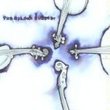| All Artists: Roussel, Dutoit, Paris Orchestra Title: Le Festin L'Araignee / Suite in F Members Wishing: 0 Total Copies: 0 Label: Elektra / Wea Release Date: 6/8/1999 Genre: Classical Styles: Opera & Classical Vocal, Ballets & Dances, Ballets, Forms & Genres, Symphonies, Historical Periods, Modern, 20th, & 21st Century, Symphonies Number of Discs: 2 SwapaCD Credits: 2 UPC: 639842424028 |
Search - Roussel, Dutoit, Paris Orchestra :: Le Festin L'Araignee / Suite in F
 | Roussel, Dutoit, Paris Orchestra Le Festin L'Araignee / Suite in F Genre: Classical
|
Larger Image |
CD DetailsSimilar CDs |
CD ReviewsA Great Roussel Collection D. A Wend | Buffalo Grove, IL USA | 04/05/2007 (5 out of 5 stars) "This two-disc collection of the music of Albert Roussel has been released on other CDs (I had the Dutoit disc). These are marvelous performances of Roussel's music. The first piece - Le festin de l'Araignee (or the Spider's Feast) - was composed in 1912. It is an example of Roussel's music that describes nature that he became known for and earned him the label of an "Impressionist." The ballet consists of a series of scenes having to do with insect life in a garden with the spider as the main focus of attention. One by one, insects are trapped in the spider's web, and the spider performs a dance when he captures each victim. However, alas for the spider, he falls prey to a mantis. The ballet was a brilliant success and contains some beautiful music evoking the garden and the creatures that inhabit it.
The Sinfonietta is a pleasant short work for string orchestra, cast in two movements. It was composed in 1934 and has no stated program but seems to have been inspired by French Baroque dances. The ballet Bacchus et Ariane (1930) is among Roussel's masterpieces and for a time vied in popularity with Maurice Ravel's Daphnis and Chloe. The ballet, composed in 1930, is in two acts and is characterized by ravishing melodies and an imaginative use of brass and percussion. The story of the ballet comes from the ancient story of Ariadne, who is left on the island of Naxos, asleep, by Theseus on the voyage home to Athens from Crete after the slaying of the Minotaur. In the second act, Ariadne is desperate over her plight and attempts suicide when she is rescued by Bacchus, who falls in love with her. The ballet ends with a thrilling Bacchanale as the god crowns Ariadne with stars. This performance of the ballet by Charles Dutoit and the Orchestre de Paris is among the best and remains my favorite for the dynamic quality of the performance. The second disc begins with three shorter works: Pour en Fete de printemps (1920), the Petite Suite (1929) and Suite en Fa (1926). Pour en Fete de printemps has an air of mystery: a slow introduction gives way to a dance that becomes more energetic as the music progresses. Then, the music slows becoming more reflective before the tempo quickens and the music slowly dies away. The Petite Suite is in three short movements and is Roussel at his most playful and engaging. The movements are fast, slow Pastorale, followed by a fast and stately Mascarade. The Suite en Fa is based on French baroque dances and consists of a Prelude, Sarabande and Gigue. It is a lively suite that is pure Roussel with inventive harmonies and bracing rhythms. The ballet Aeneas (1935) is about 40 minutes long and makes use of a chorus with a large orchestra, and is about the trials that the Sybil orders the Trojan hero to perform. The hero must face solitude and Dido figures as the main temptation and her dance is scored with a solo viola. The chorus has a major role in the ballet and the music is more astringent and reflective than Roussel's previous ballets but contains some remarkable melodies, among them the warrior's dance that concludes the Prelude. Aeneas has not been a popular ballet which is perhaps due to its theme of the renunciation of earthly pleasures. Both discs are well-filled with over 75 minutes of music. The performances, conducted buy Jean Martinon, Charles Dutoit and Jean-Francis Paillard, are excellent and well-recorded although the sound for Pour en Fete de printemps is a bit dry. This is a must-have disc for anyone interested in Albert Roussel's music. " |

 Track Listings (6) - Disc #1
Track Listings (6) - Disc #1
